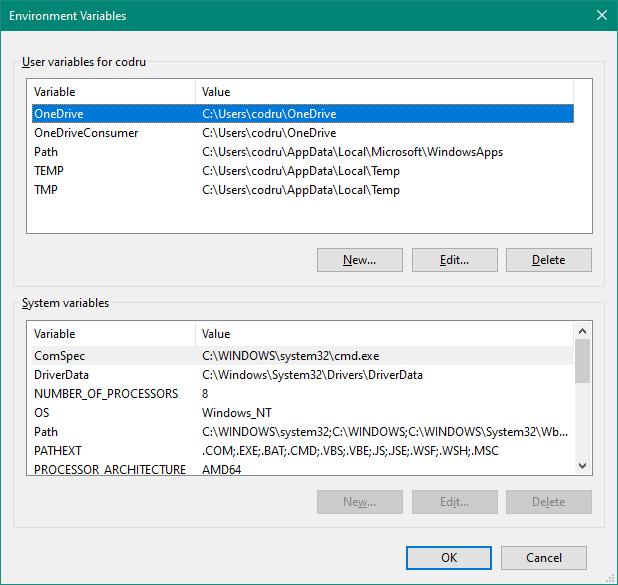

- #MAC OS LIST ENVIRONMENT VARIABLES HOW TO#
- #MAC OS LIST ENVIRONMENT VARIABLES MAC OS X#
- #MAC OS LIST ENVIRONMENT VARIABLES WINDOWS 10#
Use export ASPNET_ENV=Development to set the variable, as shown: You can filter the result by piping it to grep. Open a Terminal window, and use export to see a list of currently configured environment variables. On a Mac, you can also manage environment variables from a command prompt, using a slightly different set of commands.
#MAC OS LIST ENVIRONMENT VARIABLES MAC OS X#
Viewing and Setting Environment Variables on Mac OS X
#MAC OS LIST ENVIRONMENT VARIABLES HOW TO#
The following screenshot shows how to view the current ASPNET_ENV setting (if any), how to set it, and then how to run a sample ASP.NET 5 application from the command prompt: You can filter the list by piping (using the | character) the result to findstr. On Windows, you can use set to view current environment variables, and set ASPNET_ENV=Development to set the current environment to development. When available, the command-line flags always take priority. Environment variables offer a useful way to.

One of those legacy features is the environment variable.
#MAC OS LIST ENVIRONMENT VARIABLES WINDOWS 10#
If you add the flag -l, it’ll load your dotfiles before executing, just as a normal login shell does. Windows 10 supports a number of legacy features from older versions of the operating system. For example: cat /did-the-thing.log You did the thing The flag -c tells ZSH (and Bash, and sh) to run the command specified in your next.

Command-line flags restrict environment variables from being bypassed. The best way to handle this is by wrapping your command in a shell. Viewing and Setting Environment Variables on Windows Each operating system has its compatibility in terms of environment variables. On Mac OS or Linux, they are separated by colons. On Windows, multiple paths are separated by semicolons. This environment variable can list one or more directory paths which contain your own modules. However, if you’re working from a command line interface, it’s useful to know how to list and set environment variables. Setting the PYTHONPATH environment variable is an easy way to make Python modules available for import from any directory. If you’re developing your application in Visual Studio 2015, you can specify the environment in the debug profile for your web project. The environment variable used to determine the application environment of an ASP.NET 5 application is ASPNET_ENV. Learn more about how this works in the official docs on working with multiple environments in ASP.NET 5. Mac os environment variables 19:33 Mac os environment variables 19:33. Whether you’re developing on Windows or a Mac/Linux machine, you can control the behavior of your ASP.NET 5 application by setting environment variables.


 0 kommentar(er)
0 kommentar(er)
